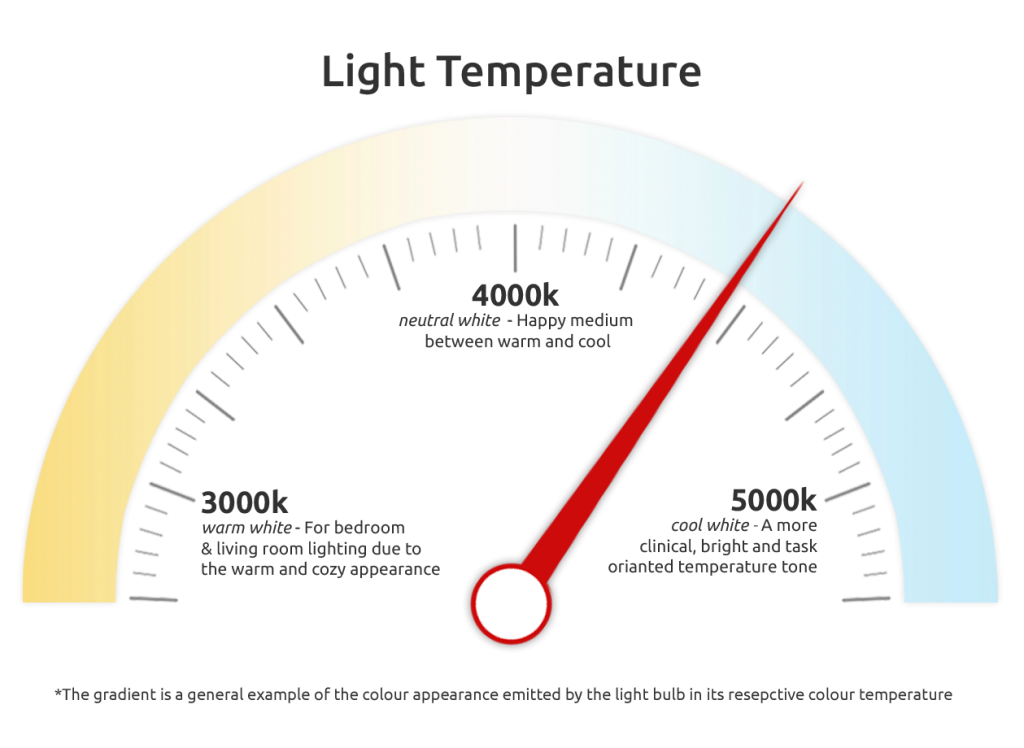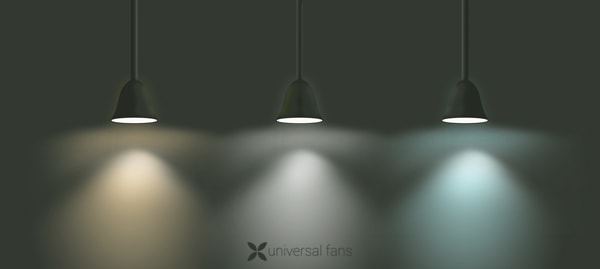Uncategorized
Choosing The Right Colour Temperature – LED Light Guide
Ever since the introduction of the light bulb in 1879, we have become accustomed to seeing our homes illuminated by the same incandescent bulbs in their Warm White colour temperature, measured at around 3000k (Kelvin Degrees). The colour temperature emitted by these bulbs gives off a slightly warm, yellowish glow, and they have be for over 130 years. The warm white coloured bulbs provide a warm cosy feeling to the room and is thus is perfect for lighting our homes.
Warm white light tends to appear toward yellows, reds, and oranges whereas cool white lights appear blue or greenish. In between the two, light appears crisp and white. The LED colour temperature is an important consideration when replacing light bulbs because it affects how things look in a room, how well we see things, our moods and emotions, and can even impact our natural sleep cycles.
While warm white colour lights might be suitable in bedrooms and living rooms, it might not be the appropriate colour temperature for other rooms where tasks need to be performed. Rooms in homes such as a bathroom, kitchen, or garage, or in industrial places like gyms, hospitals and classrooms would not be well advised in using warm lighting as it is better in these places to have a truer, whiter light, that show true colours and more contrast, with an overall “brighter” feel to them. Colour temperatures measuring in the 4000k (natural white) to a 5000k (cool white) range would be better suited to these places where tasks are needed to be performed. These colour temperatures however are not common in home lighting as the bright, blueish daylight tone can be harsh for home interiors.
Overall, Kelvins are measured in degrees on a scale from 1,000 to 10,000, most ceiling fans that include lights however, will fall within the range of 3000k to 5000k.
 When selecting products with included lights for your home, be sure to take into account its colour temperature to ensure you’re making the right choice to suit where you intend to use the bulb. As said previously, warm light works for more residential applications or anywhere a relaxed atmosphere is desired while cool colours are good for a modern look and in industrial and commercial settings, or anywhere you want to increase brightness.
When selecting products with included lights for your home, be sure to take into account its colour temperature to ensure you’re making the right choice to suit where you intend to use the bulb. As said previously, warm light works for more residential applications or anywhere a relaxed atmosphere is desired while cool colours are good for a modern look and in industrial and commercial settings, or anywhere you want to increase brightness.
 When selecting products with included lights for your home, be sure to take into account its colour temperature to ensure you’re making the right choice to suit where you intend to use the bulb. As said previously, warm light works for more residential applications or anywhere a relaxed atmosphere is desired while cool colours are good for a modern look and in industrial and commercial settings, or anywhere you want to increase brightness.
When selecting products with included lights for your home, be sure to take into account its colour temperature to ensure you’re making the right choice to suit where you intend to use the bulb. As said previously, warm light works for more residential applications or anywhere a relaxed atmosphere is desired while cool colours are good for a modern look and in industrial and commercial settings, or anywhere you want to increase brightness.

